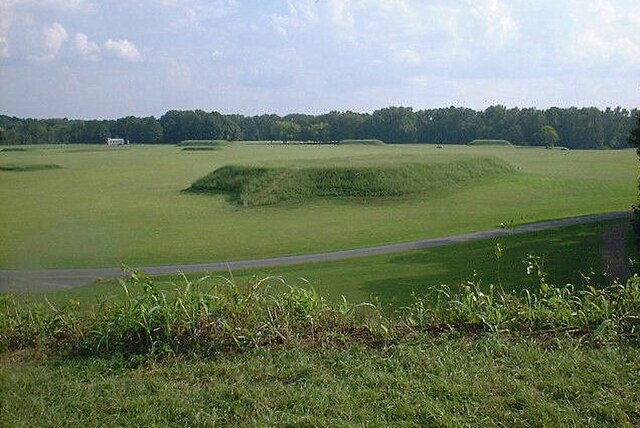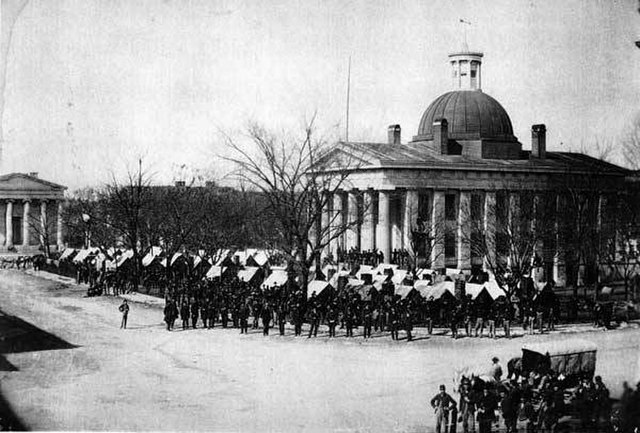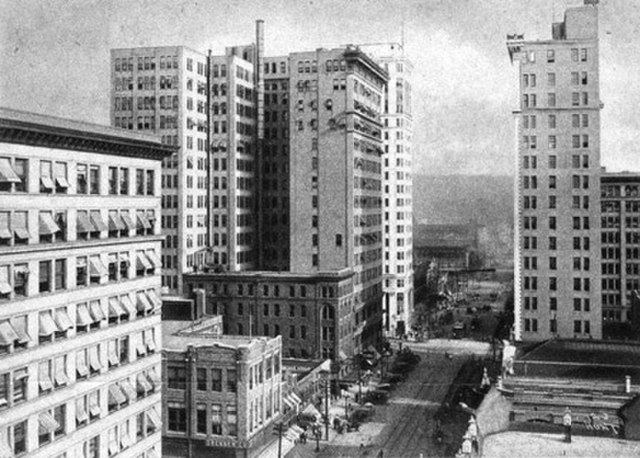Cahaba, also spelled Cahawba, was the first permanent state capital of Alabama from 1820 to 1825. It was the county seat of Dallas County, Alabama until 1866. Located at the confluence of the Alabama and Cahaba rivers, the town endured regular seasonal flooding.
St. Lukes Episcopal Church, built 1854 at Cahaba; moved to Martin's Station in 1878; returned to Old Cahawba in 21st century
Grave of an unknown soldier buried in Cahaba
The Perine Store; photo likely taken in the last quarter of the 19th century.
St. Luke's Episcopal Church at Martin's Station (approximately 15 miles (24 km) from Cahaba) in 1934.
Alabama is a state in the Southeastern region of the United States. It borders Tennessee to the north, Georgia to the east, Florida and the Gulf of Mexico to the south, and Mississippi to the west. Alabama is the 30th largest by area and the 24th-most populous of the 50 U.S. states.
The Moundville Archaeological Site in Hale County. It was occupied by Native Americans of the Mississippian culture from 1000 to 1450 CE.
The main house, built in 1833, at Thornhill in Greene County. It is a former Black Belt plantation.
Union Army troops occupying Courthouse Square in Huntsville, following its capture and occupation by federal forces in 1864
The developing skyline of Birmingham in 1915








